West Spanish Peak - One Hell of a Steep Climb!
Saturday, August 08, 2009
 Cuchara, Colorado, United States
Cuchara, Colorado, United States
Although I’ve included some other sightseeing on this mini
road trip in Colorado, the primary goal of the tour is to climb West Spanish
Peak . At 13,631 feet, West Spanish Peak is not one of the highest points in
Colorado and not even a fourteener. However, it has several superlatives. With
a summit about 6,000 feet below its northern base it is one of the most prominent
peaks in the state. Set apart from the Culebra sub-range of the Sangre de Cristo
Range, both West and (lower) East Spanish Peaks stand out on their own away
from the state’s main mountain ranges. That also makes West Spanish Peak the
easternmost peak higher than 4,000 meters in the U.S.
Traveling through southern Colorado to New Mexico on I-25
you can’t help noticing the two mountain peaks that stand out towards the
plains separate from the wall of the Sangre de Christos. Those two big
breastlike forms are the Spanish Peaks. Having climbed many of Colorado’s
fourteeners over the years, my goal recently has been to hike prominent
mountains in other areas of the state I generally haven’t hiked in before for
some scenic variety.
From Trinidad I took mostly unpaved forest service roads
directly toward the peak . The Las Animas County backcountry is still given over
to cattle grazing within and outside of forest service land, and the landscape
in the area is scenic in a kind of old southwestern New Mexico like way. The
road rose and dropped gradually for what seemed like an eternity before rapidly
picking up elevation towards Cordova Pass at 11,248 feet to the southwest of
the peak. I set up my tent for the night, took a short walk for some sunset
pictures, put on my warm clothes, and ate my sandwich for dinner while
preparing for a cold night. At 11,000 feet in Colorado nights are usually close
to freezing.
The trail to West Spanish Peak is only about 3.5 miles each
way from the trailhead. An elevation gain of 2,400 feet over that distance
shouldn’t be particularly difficult to do, but with West Spanish there’s a
catch. The first two miles of the trail are close to level, rising only very
gradually through meadows and then thick evergreen forest to timberline. That
was the pleasant part and really quite beautiful in the early light of morning .
Then the hard part begins. The last 1.5 miles include almost all the elevation
gain and are on a steep scree slope that’s one of those “take two steps up,
slide one step back” kinds of surfaces. I hadn’t come across any descriptions
warning me that it would be this hard, but I think it turned out to be one of
the hardest and least pleasant mountain hikes I’ve undertaken in Colorado.
But I made it to the top and the views are stupendous in all
directions. To the west is the wall of the Sangre de Christo Range and to the
east East Spanish Peak and beyond it the Great Plains. An interesting feature
of the area is lines of rock called radiating dikes running out from the peak’s
lower flanks, volcanic formations of batholithic rock that look like walls.
Scree is fortunately fast and easy to descend, and
altogether the nearly eight mile hike was not too taxing. I continued west from
Cordova Pass through San Isabel National Forest to the junction with CO-12
where I stopped at a lodge for a beer and a huge burger smothered in green
chili and jalapenos . The area from Cuchara Pass down and north to La Veta is an
especially beautiful part of Colorado, particularly as you get closer to the
town and can see the massive bulk of the two peaks in the distance. Yes, I was
on top up there just a few hours ago!
Other Entries
-
1Arapahoe Glacier and Lost Lake -Indian Peaks Hikes
Sep 27315 days prior Eldora, United Statesphoto_camera34videocam 0comment 0
Eldora, United Statesphoto_camera34videocam 0comment 0 -
2Two Kellythons in Rocky Mountain National Park
Oct 04308 days prior Rocky Mountain National Park, United Statesphoto_camera62videocam 0comment 0
Rocky Mountain National Park, United Statesphoto_camera62videocam 0comment 0 -
3Clark Peak Hike - Remote Far Northern Colorado
Oct 19293 days prior Gould, United Statesphoto_camera38videocam 0comment 0
Gould, United Statesphoto_camera38videocam 0comment 0 -
4Mount Audubon Hike - Indian Peaks Wilderness
Oct 29283 days prior Ward, United Statesphoto_camera21videocam 0comment 0
Ward, United Statesphoto_camera21videocam 0comment 0 -
5Waterton Canyon Bike Ride - So Close to Denver
Nov 24257 days prior Waterton, United Statesphoto_camera38videocam 0comment 0
Waterton, United Statesphoto_camera38videocam 0comment 0 -
6Two Cycling "Kellythons" in Front Range Foothills
Mar 04157 days prior Gold Hill, United Statesphoto_camera9videocam 0comment 0
Gold Hill, United Statesphoto_camera9videocam 0comment 0 -
7Brian's Visit to Denver
May 3070 days prior Denver, United Statesphoto_camera15videocam 0comment 0
Denver, United Statesphoto_camera15videocam 0comment 0 -
8Bear Peak/Flatirons Hike with Myra
Jun 2148 days prior Boulder, United Statesphoto_camera20videocam 0comment 0
Boulder, United Statesphoto_camera20videocam 0comment 0 -
9Pawnee Buttes - Sentinels on the Plains
Jul 1623 days prior Keota, United Statesphoto_camera21videocam 0comment 0
Keota, United Statesphoto_camera21videocam 0comment 0 -
10Cheyenne Frontier Days - Daddy of Them All
Jul 2514 days prior Cheyenne, United Statesphoto_camera20videocam 0comment 0
Cheyenne, United Statesphoto_camera20videocam 0comment 0 -
11Castlewood Canyon State Park - Pines on Plains
Aug 026 days prior Franktown, United Statesphoto_camera25videocam 0comment 0
Franktown, United Statesphoto_camera25videocam 0comment 0 -
12Roxborough State Park - Standing Red Rocks
Aug 035 days prior Roxborough, United Statesphoto_camera26videocam 0comment 0
Roxborough, United Statesphoto_camera26videocam 0comment 0 -
13Trinidad & Ludlow - Historic Southern Colorado
Aug 071 day prior Trinidad, United Statesphoto_camera29videocam 0comment 0
Trinidad, United Statesphoto_camera29videocam 0comment 0 -
14West Spanish Peak - One Hell of a Steep Climb!
Aug 08 Cuchara, United Statesphoto_camera36videocam 0comment 0
Cuchara, United Statesphoto_camera36videocam 0comment 0 -
15Great Sand Dunes National Park - Colorado's Sahara
Aug 091 day later Great Sand Dunes National Park and Preserve, United Statesphoto_camera42videocam 0comment 0
Great Sand Dunes National Park and Preserve, United Statesphoto_camera42videocam 0comment 0 -
16San Luis Valley - The American Altiplano
Aug 102 days later Crestone, United Statesphoto_camera21videocam 0comment 0
Crestone, United Statesphoto_camera21videocam 0comment 0 -
17El Dorado Canyon Hike
Aug 2416 days later Eldorado Springs, United Statesphoto_camera35videocam 0comment 0
Eldorado Springs, United Statesphoto_camera35videocam 0comment 0 -
18Cripple Creek/Victor Mining District - Gold Rush
Aug 2719 days later Cripple Creek, United Statesphoto_camera43videocam 0comment 0
Cripple Creek, United Statesphoto_camera43videocam 0comment 0 -
19Greenhorn Peak Hike - Highest Point in Wet Range
Aug 2820 days later Farisita, United Statesphoto_camera30videocam 0comment 0
Farisita, United Statesphoto_camera30videocam 0comment 0 -
20James Peak Hike - Three County Thirteener
Sep 0326 days later Saint Marys, United Statesphoto_camera40videocam 0comment 0
Saint Marys, United Statesphoto_camera40videocam 0comment 0 -
21Herman Gulch Hike & Silver Plume
Sep 1235 days later Silver Plume, United Statesphoto_camera13videocam 0comment 0
Silver Plume, United Statesphoto_camera13videocam 0comment 0 -
22Trans-Gore Range Hike - Summit Autumn Splendor
Sep 2750 days later Copper Mountain, United Statesphoto_camera41videocam 0comment 0
Copper Mountain, United Statesphoto_camera41videocam 0comment 0 -
23Golden & Dinosaur Ridge - Hikes Close to Home
Oct 1770 days later Golden, United Statesphoto_camera34videocam 0comment 0
Golden, United Statesphoto_camera34videocam 0comment 0 -
24Henry Moore in Denver Botanical Gardens
May 25290 days later Denver, United Statesphoto_camera57videocam 0comment 0
Denver, United Statesphoto_camera57videocam 0comment 0 -
25Late Spring in Rocky Mountain National Park
Jun 06302 days later Rocky Mountain National Park, United Statesphoto_camera32videocam 0comment 0
Rocky Mountain National Park, United Statesphoto_camera32videocam 0comment 0 -
26Greek Festival at Cathedral of the Assumption
Jun 19315 days later Denver, United Statesphoto_camera27videocam 0comment 0
Denver, United Statesphoto_camera27videocam 0comment 0 -
27Idaho Springs & the Mother Cabrini Shrine
Jul 14340 days later Idaho Springs, United Statesphoto_camera10videocam 0comment 0
Idaho Springs, United Statesphoto_camera10videocam 0comment 0 -
28Saint Vrain Peak Hike - Front Range Prominence
Aug 19376 days later Allenspark, United Statesphoto_camera37videocam 0comment 0
Allenspark, United Statesphoto_camera37videocam 0comment 0 -
29Grays & Torreys Peaks - Highest Continental Divide
Sep 02390 days later Bakerville, United Statesphoto_camera20videocam 0comment 0
Bakerville, United Statesphoto_camera20videocam 0comment 0 -
30French Pass Trail Hike with Jerad
Sep 11399 days later Jefferson, United Statesphoto_camera10videocam 0comment 0
Jefferson, United Statesphoto_camera10videocam 0comment 0 -
31Mohawk Lakes Hike with Jerad and Timby
Sep 18406 days later Blue River, United Statesphoto_camera39videocam 0comment 0
Blue River, United Statesphoto_camera39videocam 0comment 0 -
32Mt. Sanitas & South Boulder Peak - Hikes with Myra
Sep 21409 days later Boulder, United Statesphoto_camera14videocam 0comment 0
Boulder, United Statesphoto_camera14videocam 0comment 0

 Cuchara, Colorado, United States
Cuchara, Colorado, United States
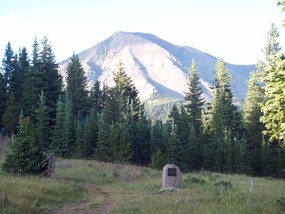
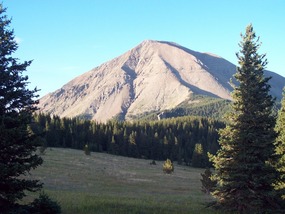
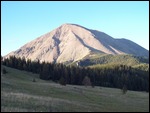

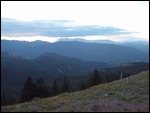
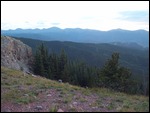
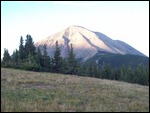
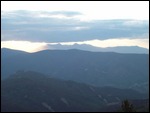
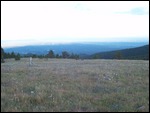
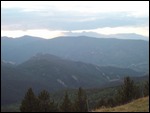
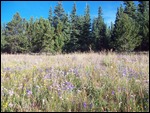

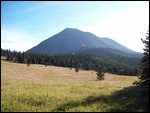

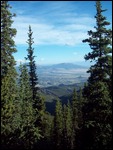
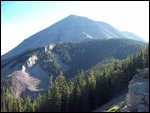
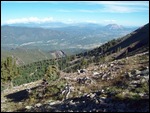
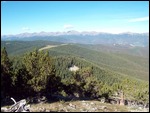
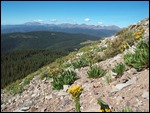

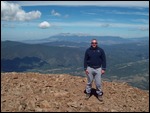
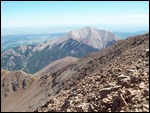
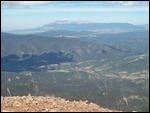
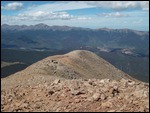
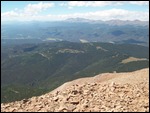
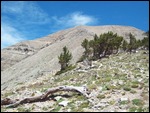
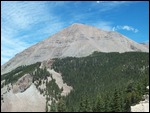
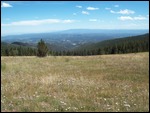
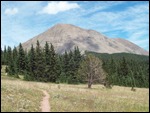
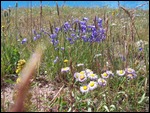
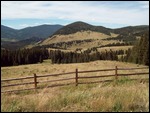
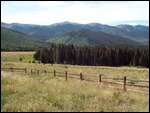
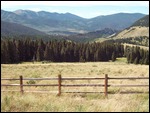
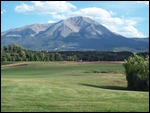
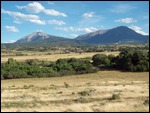
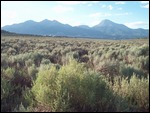
2025-05-22